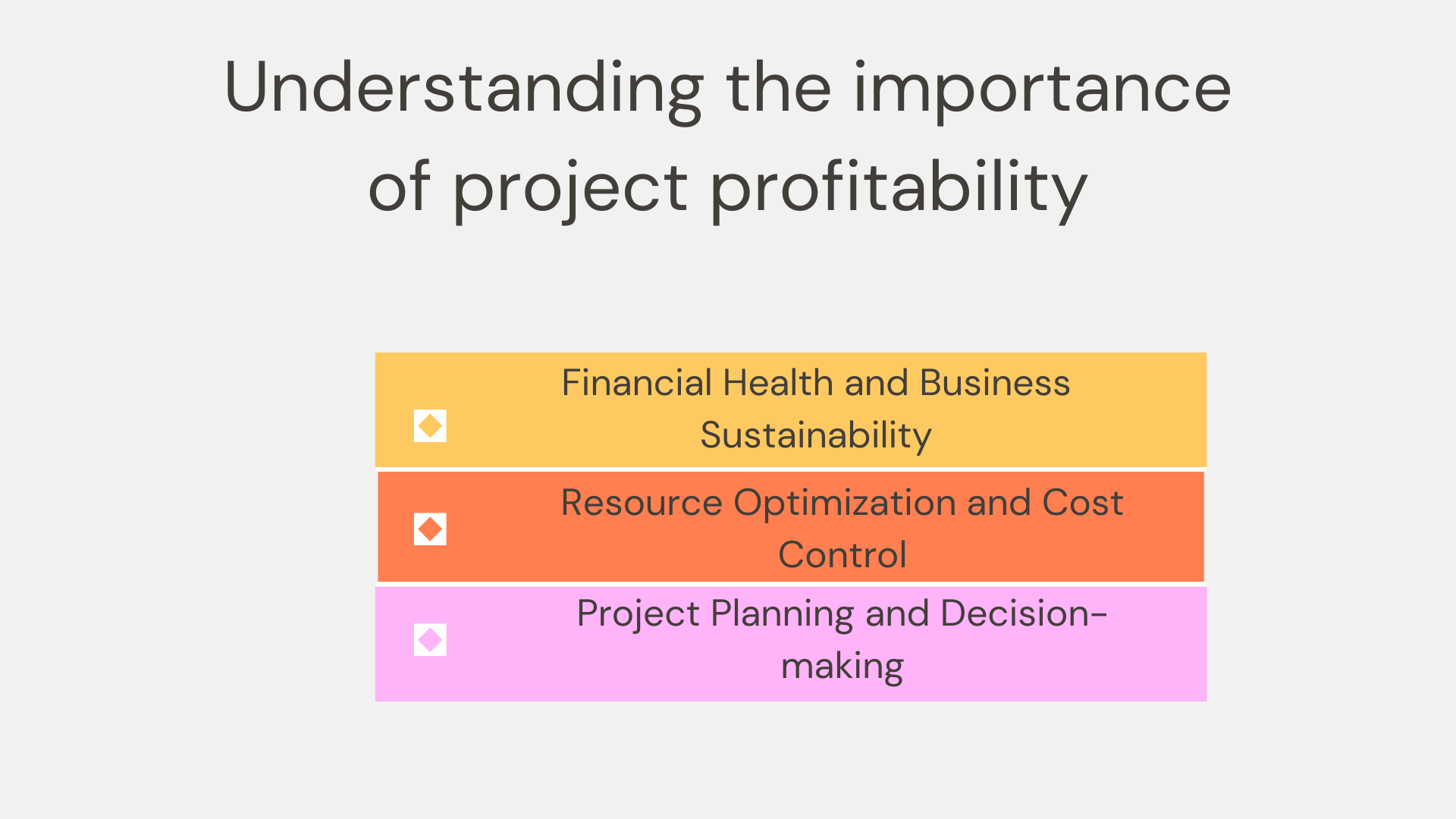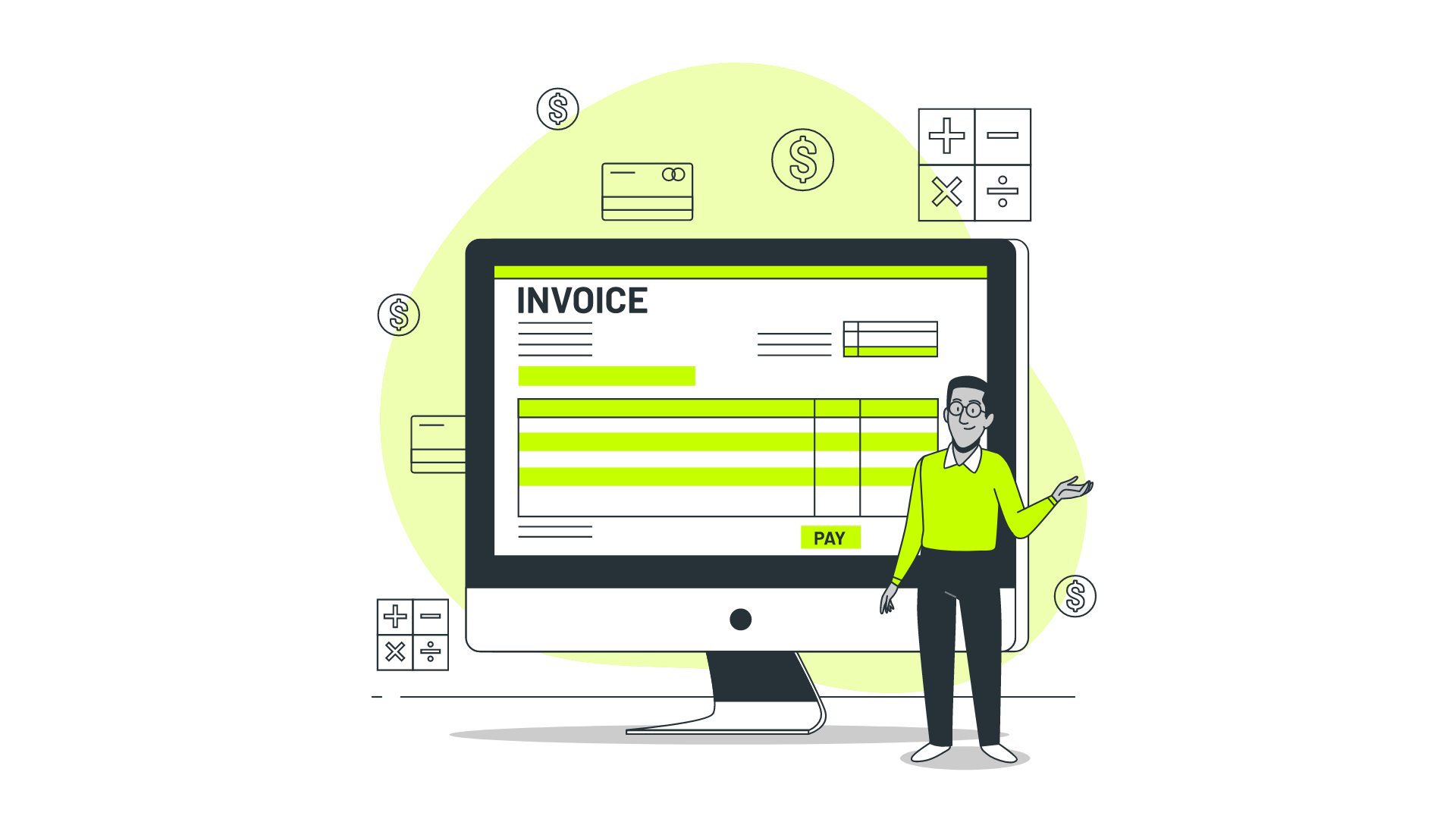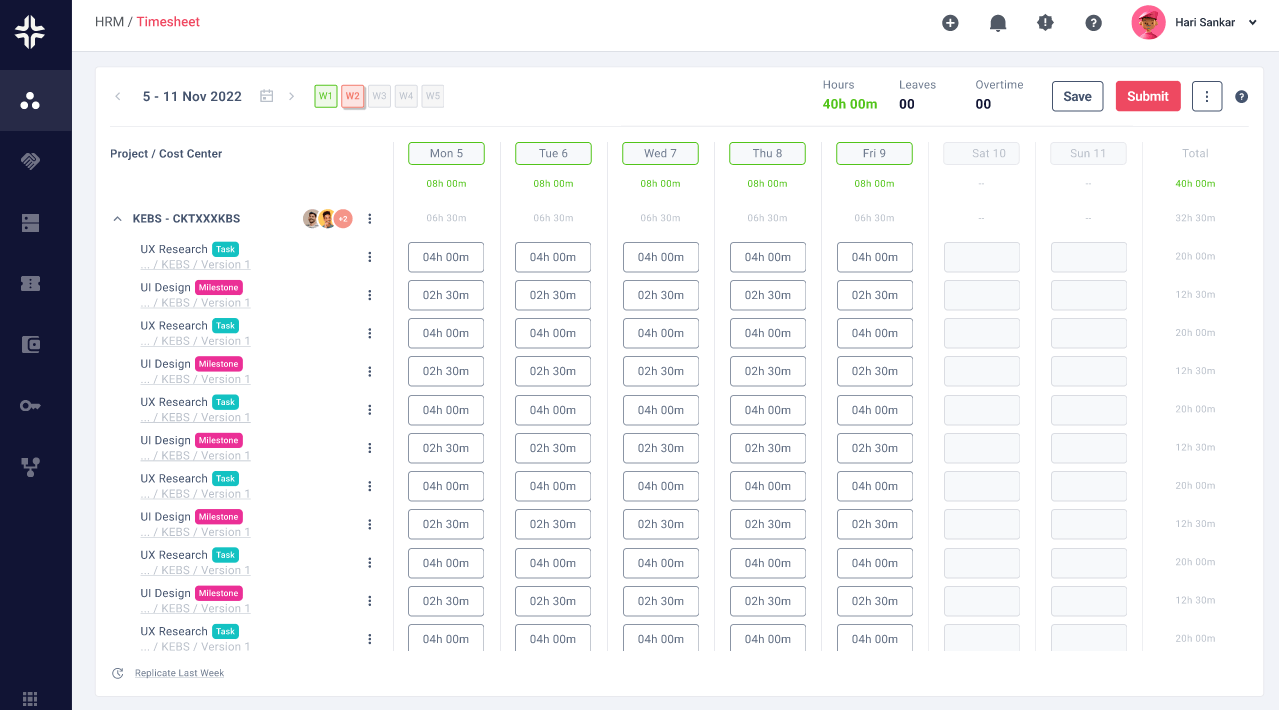
Home »
Improving Project Profitability with Timesheet & Billing
Unlock strategies to enhance project profitability using timesheet and billing systems.
Introduction: The Significance of Project Profitability
In today’s competitive business landscape, project profitability plays a vital role in the success and sustainability of organizations across various industries. Profitable projects not only contribute to the financial health of a business but also serve as indicators of effective resource allocation, efficient project management, and overall operational excellence. However, achieving and maintaining project profitability can be a complex undertaking, requiring careful cost control, accurate time tracking, and streamlined invoicing processes.
This article delves into the significance of project profitability and explores how Timesheet and Billing Software can be a game-changer in improving the financial outcomes of projects.
Understanding the importance of project profitability
Understanding the importance of project profitability is crucial when it comes to improving project outcomes and maximizing financial success. Project profitability goes beyond simply generating revenue; it involves effectively managing costs, optimizing resources, and delivering value to clients. In the context of using Timesheet and Billing Software, comprehending the significance of project profitability becomes even more relevant. Here are some key reasons highlighting its importance:
- Financial Health and Business Sustainability: Project profitability directly impacts the financial health and long-term sustainability of a business. Profitable projects contribute to overall revenue generation, profitability ratios, and cash flow, ensuring that the organization remains financially stable and can invest in future growth opportunities.
- Resource Optimization and Cost Control: Efficient project profitability management involves optimizing resources and controlling costs. Timesheet and Billing Software enable businesses to accurately track time, monitor project expenses, and analyze resource utilization.
- Project Planning and Decision-making: Understanding project profitability allows businesses to make informed decisions and plan strategically. Timesheet and Billing Software provide valuable insights into project performance, budget utilization, and resource allocation.

Challenges in managing project costs and billing
Managing project costs and billing can present several challenges for businesses. Here are some key challenges that organizations often encounter in this aspect:
- Inaccurate Time Tracking: Manual time tracking methods or reliance on outdated systems can result in inaccurate recording of hours worked, tasks performed, and project-related activities. This can lead to incorrect billing, miscalculated project costs, and ultimately, decreased profitability.
- Complex Expense Management: Managing project-related expenses, such as travel costs, equipment purchases, and subcontractor fees, can be complex and time-consuming. Without a streamlined system in place, businesses may struggle to track and allocate expenses accurately, leading to challenges in billing clients appropriately and calculating project profitability.
- Inefficient Invoicing Processes: Manual or inefficient invoicing processes can delay the billing cycle and result in errors. Generating and delivering invoices in a timely manner is crucial for cash flow management and maintaining healthy client relationships. Ineffective invoicing processes can hinder project profitability and impact the overall financial health of the business.
- Lack of Real-time Visibility: Without real-time visibility into project costs and billing, businesses may struggle to make timely decisions regarding resource allocation, cost control measures, and project adjustments. The absence of accurate and up-to-date information can hinder profitability optimization and hinder effective project management.
- Integration Challenges: Many businesses use multiple systems for time tracking, expense management, and accounting. However, integrating these systems and ensuring seamless data flow can be a challenge. Inconsistent or incompatible data across different platforms can result in errors, data duplication, and hinder accurate project cost calculations and billing.
- Limited Reporting and Analysis: In the absence of robust reporting and analysis capabilities, businesses may struggle to gain insights into project profitability, cost drivers, and potential areas for improvement. Lack of data-driven decision-making can impede profitability optimization and hinder the organization’s ability to effectively manage project costs and billing.
Accurate Time Tracking for Enhanced Project Cost Control
Accurate time tracking is crucial for enhanced project cost control. By implementing a reliable time tracking system, businesses can ensure precise recording of hours worked, tasks completed, and project-related activities.
Accurate time data enables project managers to track resource utilization, identify inefficiencies, and make informed decisions to optimize project costs. It provides a clear picture of how time is allocated across different tasks, allowing for better resource allocation and improved productivity. With accurate time tracking, organizations can control project costs effectively, avoid budget overruns, and maximize project profitability.
Optimal Resource Allocation and Project Planning
Optimal resource allocation and project planning are essential for maximizing project profitability. By utilizing Timesheet and Billing Software, businesses can streamline resource allocation processes and improve project planning strategies. These software solutions offer insights into resource availability, workload distribution, and skill sets, enabling project managers to allocate resources efficiently.
With Timesheet and Billing Software, businesses can:
- Assess Resource Availability
- Optimize Workload Distribution
- Forecast Resource Requirements
- Align Resources with Project Priorities
- Enhance Project Planning
By leveraging Timesheet and Billing Software, businesses can optimize resource allocation, improve project planning accuracy, and ultimately enhance project profitability.
| Optimal Resource Allocation and Project Planning: | Benefits of Using Timesheet and Billing Software |
| Assess Resource Availability | Gain insights into resource availability and skills. Make informed decisions for resource allocation. |
| Optimize Workload Distribution | Balance workloads among team members. Prevent overallocation and ensure efficient task distribution. |
| Forecast Resource Requirements | Use data-driven insights to forecast future resource needs. Plan for resource acquisition and allocation in advance. |
| Align Resources with Project Priorities | Allocate resources based on project priorities. Ensure critical projects receive necessary resources for success. |
| Enhance Project Planning | Improve project planning accuracy. Utilize resource data to create more realistic project schedules and timelines. |
Streamlined Invoicing and Revenue Recognition
Streamlined invoicing and revenue recognition are critical for maximizing project profitability. Timesheet and Billing Software simplify the invoicing process, ensuring accurate and timely client billing.
These software solutions automate invoice generation based on recorded project hours and expenses, minimizing errors and enhancing transparency. With streamlined invoicing, businesses can expedite payment collection, improve cash flow management, and reduce the risk of revenue leakage.
Additionally, Timesheet and Billing Software provide features for revenue recognition, allowing organizations to track and report revenue accurately, aligning with accounting standards and facilitating financial reporting. By streamlining invoicing and revenue recognition, businesses can optimize their financial processes, enhance project profitability, and maintain healthy client relationships.

Improving Collaboration and Client Satisfaction
Improving collaboration and client satisfaction are key outcomes of implementing Timesheet and Billing Software in project management. These software solutions offer features that facilitate collaboration among team members and foster effective communication with clients, resulting in enhanced project outcomes and client satisfaction.
- Collaboration Among Team Members: Timesheet and Billing Software provide centralized platforms where team members can track their progress, update project statuses, and collaborate on tasks. This promotes transparency, fosters better communication, and enables real-time collaboration.
- Enhanced Communication with Clients: Timesheet and Billing Software offer functionalities that enable efficient and transparent communication with clients. Businesses can provide clients with access to project updates, timesheets, and invoices, fostering a sense of transparency and trust. Clients can review project progress, track billable hours, and gain visibility into project costs, which helps build strong client relationships and increases client satisfaction.
- Timely and Accurate Client Invoicing: Timesheet and Billing Software streamline the invoicing process, ensuring timely and accurate client billing. This contributes to client satisfaction by providing clear and transparent invoices that reflect the actual work performed and expenses incurred. With efficient invoicing, businesses can establish a professional image, maintain positive client relationships, and enhance overall client satisfaction.
By improving collaboration among team members and facilitating effective communication with clients, Timesheet and Billing Software enhance project outcomes and contribute to overall client satisfaction.
Best Practices for Implementing Timesheet and Billing Software
Implementing Timesheet and Billing Software can be a transformative step for businesses in improving project profitability and efficiency. To ensure a successful implementation, here are some best practices to consider:
- Clearly Define Objectives
- Select the Right Software Solution
- Plan for Change Management
- Customize and Configure
- Conduct Thorough Testing
- Provide Training and Support
- Monitor and Evaluate
Key considerations for successful implementation
Successful implementation of Timesheet and Billing Software requires careful consideration of several key factors. Here are some essential considerations to ensure a smooth and effective implementation:
- Thorough Needs Assessment: Conduct a thorough needs assessment to understand your organization’s specific requirements and pain points. Engage key stakeholders from various departments, such as project management, finance, and operations, to gather insights and identify the critical functionalities and features needed from the software. This assessment will serve as the foundation for selecting the right software solution and tailoring it to your organization’s needs.
- Scalability and Integration: Consider the scalability of the software solution to accommodate your organization’s growth and changing needs. Ensure that the software integrates smoothly with your existing systems, such as accounting software, project management tools, and HR systems. Seamless integration will allow for the efficient flow of data across different platforms, minimizing manual work and reducing the risk of errors.
- User-Friendly Interface: Choose a Timesheet and Billing Software solution with a user-friendly interface. A software solution that is intuitive and easy to navigate will promote user adoption and minimize the learning curve for employees. Conduct user acceptance testing to ensure that the software meets the usability needs of different user roles within the organization.

Overcoming challenges and maximizing software adoption
Overcoming challenges and maximizing software adoption is crucial for a successful implementation of Timesheet and Billing Software. Here are some strategies to address challenges and enhance software adoption:
- Clear Communication and Training: Effective communication is key to ensuring that employees understand the benefits and purpose of the software. Clearly communicate the objectives, advantages, and expected outcomes of implementing the Timesheet and Billing Software.
- User Involvement and Feedback: Involve end-users in the implementation process from the early stages. Seek their input, involve them in decision-making processes, and incorporate their feedback into the software configuration.
- Address Resistance to Change: Change resistance can hinder software adoption. Identify potential resistance points and address them proactively. Communicate the benefits of the software to employees and involve them in the decision-making process.
- Continuous Monitoring and Evaluation: Continuously monitor and evaluate the software’s performance and its impact on project management, financial processes, and overall business outcomes.
By addressing challenges, fostering software adoption, and continuously monitoring its performance, organizations can successfully implement Timesheet and Billing Software, enhance project profitability, and improve overall operational efficiency.
Power of KEBS Unified Time-Tracking Platform

Here are some key aspects highlighting the power of the KEBS Unified Time-Tracking Platform:
- Centralized Time Management: The platform provides a centralized system for tracking and managing employee time and attendance. It eliminates the need for manual time sheets or disparate systems, ensuring that all time-related data is captured and recorded in a single, unified platform. This centralization simplifies the process, reduces administrative overhead, and promotes accuracy in time tracking.
- Real-time Tracking and Monitoring: The platform enables real-time tracking of employee time, allowing supervisors and managers to monitor attendance, breaks, and time spent on different projects or tasks. Real-time visibility provides valuable insights into employee productivity, identifies bottlenecks, and enables timely interventions when necessary. This feature ensures better resource allocation and enhances overall operational efficiency.
- Streamlined Payroll and Billing Processes: The KEBS Unified Time-Tracking Platform seamlessly integrates with payroll and billing systems, automating the transfer of accurate time data. This integration eliminates manual data entry, reduces errors, and ensures timely and accurate payroll processing. It also simplifies client billing by generating detailed reports that reflect billable hours and project-specific time allocations.
- Customizable Reporting and Analytics: The platform offers robust reporting and analytics capabilities, allowing businesses to generate customized reports based on specific requirements. These reports provide insights into employee productivity, project profitability, and resource utilization. By leveraging these analytics, businesses can make data-driven decisions, optimize workforce management, and identify areas for improvement.
| Centralized Time Management | The platform offers a centralized system for tracking and managing employee time. It eliminates manual time sheets and ensures accurate data capture in a unified platform. |
| Real-time Tracking and Monitoring | Enable real-time tracking of employee time. Supervisors can monitor attendance, breaks, and project-related time, enhancing resource allocation and operational efficiency. |
| Streamlined Payroll and Billing | Seamless integration with payroll and billing systems automates time data transfer. Reduce errors, ensure accurate payroll, and simplify client billing with detailed reports. |
| Customizable Reporting and Analytics | Robust reporting capabilities provide insights into productivity, project profitability, and resource usage. Leverage analytics for data-driven decisions and workforce optimization. |
Conclusion
In conclusion, implementing Timesheet and Billing Software is a strategic move for businesses seeking to improve project profitability. The software offers a range of benefits, including accurate time tracking, streamlined invoicing processes, optimal resource allocation, and enhanced collaboration with clients.
By leveraging these features, organizations can gain better control over project costs, improve financial management, and maximize profitability.
The KEBS Unified Time-Tracking Platform is a powerful tool that revolutionizes the way businesses manage and track employee time and attendance. With its comprehensive features and user-friendly interface, the platform offers numerous benefits that significantly impact efficiency, productivity, and accuracy within an organization.
Contact us to know more!









